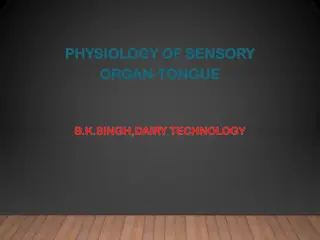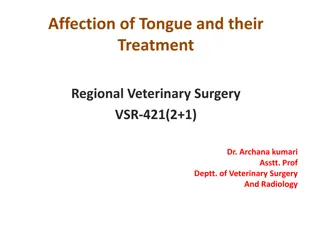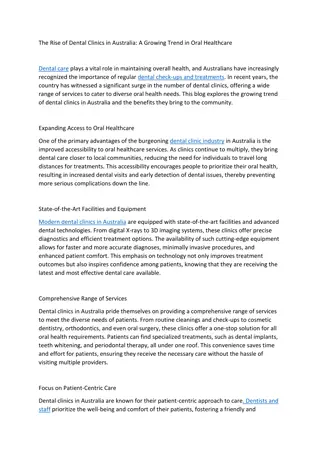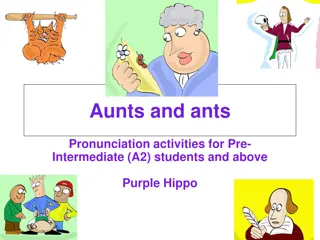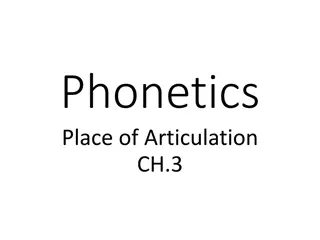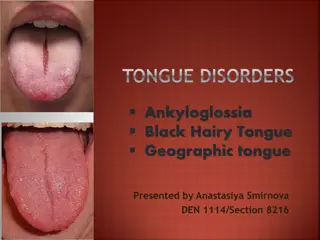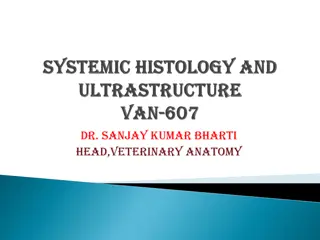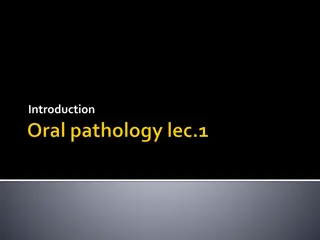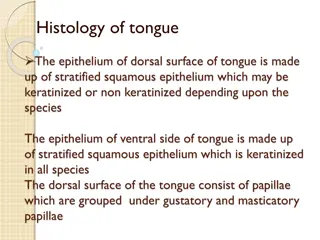
Understanding Tongue Development and Clinical Considerations
"Explore the detailed development of the tongue, including nerve supply, formation of frenum and papillae, musculature, and clinical considerations. Discover the contributions of pharyngeal arches and the stages of tongue development. Uncover the significance of the tongue as a vital organ for deglutition, taste, and speech."
Download Presentation

Please find below an Image/Link to download the presentation.
The content on the website is provided AS IS for your information and personal use only. It may not be sold, licensed, or shared on other websites without obtaining consent from the author. If you encounter any issues during the download, it is possible that the publisher has removed the file from their server.
You are allowed to download the files provided on this website for personal or commercial use, subject to the condition that they are used lawfully. All files are the property of their respective owners.
The content on the website is provided AS IS for your information and personal use only. It may not be sold, licensed, or shared on other websites without obtaining consent from the author.
E N D
Presentation Transcript
At the end of the lecture, the students should be able to describe in detail the- ,Development of tongue, Nerve Supply of tongue, Formation of frenum and papillae ,Development of musculature of tongue, Enlist clinical Considerations.
At the end of the lecture the student should be able to Criteria Condition Condition S.N. Learning Objectives Domain Level 1 Cognitive Must Know All Describe Development of tongue and Nerve Supply of tongue 2 Cognitive & Psychomotor Must Know All Descibe Formation of frenum and papillae 3 Cognitive Must Know All Development of musculature of tongue. Enlist clinical Considerations 4 Cognitive Must Know All
Pharyngeal Arch Contributions DEVELOPMENT OF TONGUE Nerve Supply CLINICAL CONSIDERATIONS
Tongue is a mass of striated muscle covered with mucous membrane. It is a highly muscular organ of deglutition, taste and speech.
Overview Development of the Tongue The tongue has contributions from all pharyngeal arches which changes with time. Overview Development of the Tongue The tongue initially begins as swelling rostral to foramen cecum, the median tongue bud.
Arch 1 - oral part of tongue (anterior 2/3) Arch 2 - initial contribution to surface is lost Arch 3 - pharyngeal part of tongue (posterior 1/3) Arch 4 - epiglottis and adjacent regions
It starts in the 4th month of the intrauterine life. The tongue develops in relation to the pharyngeal arches in the floor of the developing mouth.
The medial most part of the mandibular arches proliferate to form 2 lingual swelling (derived from the anterior end of each first pharyngeal arch )
The lingual swelling are partially separated from each other by another swelling that appears in midline , at about 4th wk The median swelling is called the tuberculum impar .
Immediately behind the tuberculum impar , the epithelium proliferates to form a down growth ( thyroglossal duct) from which thyroid gland develops. The site of this downgrowth is subsequently marked by a depression called the foramen caecum .
The lateral swelling now enlarge,grow medially and fuse with each other and the tuberculum impar . The lingual swelling thus form the anterior 2/3 or body of the tongue.
Another midline swelling is seen in relation to the medial ends of the 2nd, 3rd, and 4th arches. This swelling is called the hypobrachial eminence.
The eminence soon shows a subdivision into a cranial part related to the 2nd and 3rd arches (called the copula) and a caudal part related to the 4th arch. The caudal part forms the epiglottis.
The anterior 2/3 of the tongue is thus derived from the mandibular arch . According to some the tuberculum impar does not make any significant contribution to the tongue.
The posterior 1/3 of the tongue is thus derived from the cranial part of the hypobrachial eminence (copula). In this situation , the 2nd arch mesoderm gets buried below the surface .
The 3rd arch mesoderm grows over it to fuse with the mesoderm of the 1st arch. The posterior 1/3 of the tongue is thus formed by 3rd arch mesoderm . The posterior most part of the tongue is derived from the 4th arch.
Anterior 2/3 of the tongue -lingual branch of the mandibular nerve, which is the post trematic nerve of the 1st arch and by the chorda tympani which is the pretrematic nerve . Posterior 1/3 of the tongue -superior laryngeal nerve, which is the nerve of the 4th arch.
The sulcus terminalis represents the interval between the lingual swellings of the 1st pharyngeal arches & the anterior ends of the 3rd pharyngeal arches. Around the edge of the anterior 2/3 rd of the tongue , the ectodermal cell proliferate & grow inferiorly into the underlying mesenchyme.
Later, these cells degenerate so that this part of the tongue becomes free. Some of the entodermal cells remain in the midline and help form the frenum of the tongue.
It is derived from the occipital myotomes and is thus supplied by the hypoglossal nerve , which is the nerve of these myotomes.
Macroglossia or microglossia or aglossia Bifid tongue because of non fusion of the lingual swellings Ankyloglossia or tongue tie
Development of tongue Nerve Supply of tongue Formation of frenum and papillae Development of musculature of tongue Clinical Considerations
Color Atlas And Text Book Of Oral Anatomy, Histology Berkovitz, B. 1ST edition. Oral Development and Histology Avery, j. K.1st edition. Oral Histology : Development, Structure and Function Tencate, 4th edition. Dental Embryology, Histology & Anatomy. Marry Bath- Balogh Inergaret. 2nd edition.


